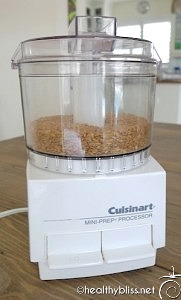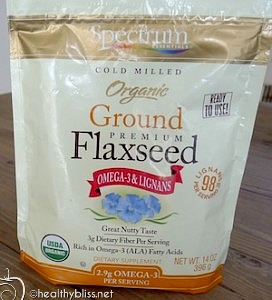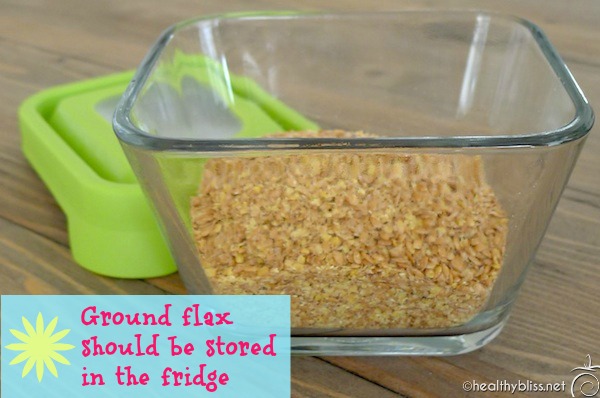Benefits of Flax Seed, How to Grind/Store and How Much to Take Daily
Flaxseed (or linseed) is a very small shiny seed with a lot of great health benefits, from reducing cholesterol to improving blood sugar levels for diabetics. The reason why it’s a Superfood is because flax is very high in dietary fiber, it’s a plant-based source of omega 3 fatty acids, and a high source of lignans (phyto-nutrients possessing powerful antioxidant and anti-inflammatory properties).
Adequate fiber in the daily diet is key for good digestive health.
All information in this article is for educational purposes only.
It is not for the diagnosis, treatment, prescription or cure of any disease or health condition.

Benefits of Flax Seed, How to Grind/Store and How Much to Take Daily
You can buy flax in a few different ways – in whole seed form, already ground into powder form (ground whole seeds) or as flax seed oil. While flax oil does have many health benefits, it is lacking the valuable fiber of the seeds themselves (because the seeds are pressed, separating the fiber from the oil).
Whole flax seeds contain both the fiber and oil, giving you all of the nutritional value in one. However, flax seeds need to be ground before eating so the body can absorb their nutrients. If not, they will simply pass through the digestive track in whole form and that means their nutrients will pass through too!

Mini-food processor to grind flax seed at home
Adding whole, unrefined high fiber foods to the diet can help strengthen the digestive system, decrease toxicity in the body, stabilize blood sugar levels, clear the skin and even improve kidney and liver function. It’s a small amount of time and money invested that offers a high return: your health!

Organic ground flax seed
If you are reading this article and have your freshly ground flax seed stored in the cupboard, please do not just move it to the fridge and think that it’s ok. It’s best to throw it away, grind a new batch and store the newly ground flax seed in the fridge. Store-bought ground flax seed should be stored in the fridge after opening.
Flax Seed FAQ:
How much ground flax seed should I eat every day?
The United States Department of Agriculture (USDA) recommended daily fiber intake is 25 grams per day for women and 38 grams per day for men. I was admittedly impressed to read the following statement in the USDA Center for Nutrition Policy and Promotion Dietary Guidelines for Americans (2010): “Most Americans greatly underconsume dietary fiber, and usual intake averages only 15 g per day. Breads, rolls, buns, and pizza crust made with refined flour are not among the best sources of dietary fiber, but currently contribute substantially to dietary fiber consumption because they are ubiquitous in typical American diets. To meet the recommendation for fiber, Americans should increase their consumption of beans and peas, other vegetables, fruits, whole grains, and other foods with naturally occurring fiber.”

Ground flax should be stored in a glass container in the fridge
2 Tbsp. of ground flax seed has almost 4 grams of total dietary fiber. I recommend that you start with adding 2 Tbsp. of ground flax seed to your daily diet, and slowly increase to 3-4 Tbsp. per day. Some people consume 6 Tbsp. daily and are very comfortable with their digestion, often finding relief from constipation and other digestive problems just from the simple increase of fiber in their diet.
Imagine someone consuming 15 grams of fiber per day who adds 4 Tbsp. of ground flax or 8 grams of fiber to their daily diet: without changing anything else; they are now consuming 23 grams of dietary fiber daily! It’s so easy!
What if I buy a package of already ground flax seed? Do I store that in the fridge?
You can buy flax seed already ground. Be sure to store it in the fridge immediately upon opening the package.
Is it better to buy the light brown or the dark brown flax seeds?
The best type of flax seed to buy is 100% certified organic, of course! I’ve tried both the light (or golden) and dark brown flax seeds, and I do make a conscious effort to add variety into my diet so sometimes I buy the golden brown and sometimes I buy the dark brown. When I’m feeling a bit wild and crazy, I even blend them both together and store the mixture in the fridge!
Is it possible to eat too much flax seed?
I do think that any one food eaten in too much excess is probably not a good thing. The key to good health is variety and balance in the diet. In this case, if you were eating 10x-20x the normal recommended amount of daily dietary fiber, you may be in store for some serious buffalo-sized poo! As I said before, start with 2 Tbsp. of ground flax seed daily and slowly build up to 3-4 Tbsp. with a maximum of 6 Tbsp. per day. Think nice human-size poo and you should be fine!
What about the fat content in flax seed?
This question always amazes me. It’s most often asked by my female clients who have been struck with the ‘no-fat’ or ‘low-fat’ mindset. These same women will turn down such a high nutrient-dense food like flax for fear of excess fat, but continue to indulge in a daily latte or afternoon chocolate bar. I am often left very perplexed by this logic!!
According to the USDA, 2 Tbsp. of ground flax seed weighs 14 grams, has 75 calories, 5.9 grams of total fat and 3.8 grams of total dietary fiber. While true that ground flax seed does contain fat (5.9 x 9 calories per gram = 53.1 calories of fat per 2 Tbsp./75 calorie serving), it’s important to keep things in perspective. If you’re eating 53 calories of fat in a 1500 calories per day diet, that equates to 3.5% of total calories in fat. Move up to 4 Tbsp. per day and you’re at 7%. Now do the math on your latte and chocolate bar and factor in their nutritional value then re-evaluate who is your friend and who is your foe. The answer: 2-4 Tbsp. of ground flax seed is not a high-fat contribution to your overall dietary intake of food.
What about the photo-estrogen in flax seed – is it dangerous?
This is another important factor to consider and a question I get asked occasionally. Remember, we are talking about adding 2-4 Tbsp. with a maximum of 6 Tbsp. daily of ground flax seed. Keep in mind too that I am recommending the whole ground flax seed, and not the oil (which would be more concentrated in phyto-estrogens). It is true that flax seed does contain photo-estrogens but there are mixed reports on whether the estrogen from flax seed alone is affecting people’s glandular and hormonal systems. I do believe if you were eating a bucket of flax seed at every meal, this would be an important issue, but we are talking about a few spoonfuls, and the other health benefits of this natural, whole and pure food are major reasons to keep it in the diet.







Keeping variety in your diet is the best way to give your body all the important micro-nutrients it needs without over-whelming it with any excess amount of anything. Of course, if you have an estrogen-related health condition or specific medical concerns, it’s best to consult with your medical doctor.
- Add 2 Tbsp. of ground flax seed to your Green Smoothie daily.
- Sprinkle 1-2 Tbsp. of ground flax seed onto a fresh fruit salad.
- Mix 1-2 Tbsp. of ground flax seed into a homemade salad dressing or raw food veggie salad.
More on Superfoods:

Follow Jennifer